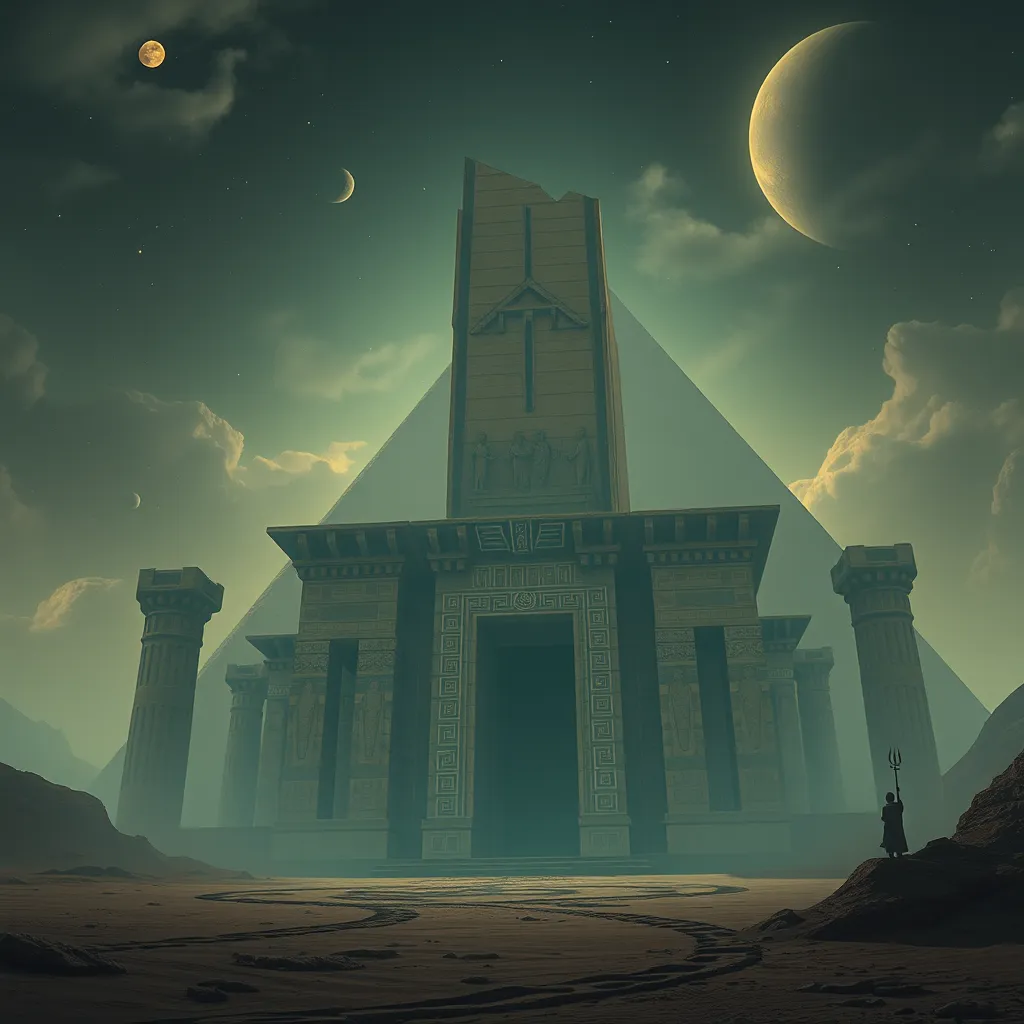The Duat: A Journey Through the Shadows of Time
I. Introduction to the Duat
The Duat, a central concept in ancient Egyptian mythology, represents the realm of the dead and the afterlife. It is often depicted as a dark, shadowy place where the souls of the deceased journey after death. The Duat holds significant importance in the spiritual beliefs of ancient Egyptians, serving as a bridge between the world of the living and the afterlife.
In the context of the afterlife, the Duat is seen as a complex landscape filled with various challenges, trials, and deities. It symbolizes the journey of the soul, where individuals confront their past deeds and seek to attain eternal life. This article aims to explore the symbolism, stories, and significance of the Duat, shedding light on its role in ancient Egyptian culture and its lasting impact on modern interpretations of the afterlife.
II. Historical Context of the Duat
The origins of the Duat can be traced back to ancient Egyptian texts dating to the Old Kingdom (c. 2686–2181 BCE). These early references to the Duat laid the groundwork for its evolving portrayal in subsequent periods. The concept of the Duat evolved through different dynasties, adapting to the changing beliefs and practices surrounding death and the afterlife.
Key texts that reference the Duat include:
- The Book of the Dead: A collection of spells and prayers designed to guide the deceased through the Duat.
- The Pyramid Texts: Ancient inscriptions found in the tombs of pharaohs, detailing their journey through the afterlife.
- The Coffin Texts: A compilation of funerary spells that provide insights into the beliefs about the Duat.
III. The Geography of the Duat
The Duat is often described as a vast and intricate landscape, comprising various realms and landmarks that serve specific purposes in the journey of the soul. The geography of the Duat reflects the ancient Egyptians’ understanding of the afterlife and their beliefs about death.
Major landmarks within the Duat include:
- The Field of Reeds: A paradise-like area where souls could enjoy eternal peace if they successfully navigate the challenges of the Duat.
- The Hall of Two Truths: A pivotal location where the deceased’s heart is weighed against the feather of Ma’at to determine their worthiness.
Each location within the Duat carries symbolic meaning, representing various aspects of life, death, and the journey toward rebirth.
IV. Deities and Entities of the Duat
The Duat is populated by numerous gods and goddesses, each playing a crucial role in the journey of the deceased. These deities embody various aspects of death, judgment, and the afterlife.
Key figures associated with the Duat include:
- Osiris: The god of the afterlife and resurrection, Osiris presides over the judgment of souls and offers them the promise of eternal life.
- Anubis: The jackal-headed god responsible for mummification and guiding souls through the Duat. He oversees the weighing of the heart.
In addition to these well-known deities, there are lesser-known entities that also play significant roles in the Duat’s mythology, each contributing to the rich tapestry of spiritual beliefs surrounding death.
V. The Journey of the Soul
The journey through the Duat is not a straightforward path; it is filled with numerous stages, challenges, and trials that the soul must face. Understanding this journey is essential to grasping the ancient Egyptians’ beliefs about the afterlife.
The stages of the soul’s journey typically include:
- Death: The initial transition from the physical world to the Duat.
- Confrontation with guardians: Deceased souls encounter various beings who challenge their intentions and deeds.
- The Weighing of the Heart: The critical moment where the heart is weighed against the feather of Ma’at, symbolizing truth and justice.
- Judgment: Depending on the outcome of the weighing, the soul either enters the Field of Reeds or faces annihilation.
Spells and rituals, often inscribed on tomb walls or included in burial goods, play a vital role in helping the deceased navigate the Duat. These texts provide guidance and protection, ensuring a successful journey through the afterlife.
VI. Symbolism and Themes in the Duat
The Duat is rich in symbolism, reflecting profound themes that resonate with the ancient Egyptians’ understanding of life and death.
Key themes include:
- The duality of life and death: The Duat represents the balance between existence and the afterlife, highlighting the interconnectedness of both realms.
- Rebirth and immortality: The journey through the Duat symbolizes the potential for rebirth, where the soul can attain eternal life through successful navigation.
- Moral implications: The journey emphasizes the importance of ethical living, as one’s deeds directly impact their fate in the afterlife.
VII. The Duat in Modern Culture
The concept of the Duat has transcended ancient Egyptian culture, influencing modern literature, art, and popular media. Its representation reflects a fascination with the afterlife and the enduring legacy of Egyptian mythology.
In literature and art, the Duat often serves as a backdrop for stories exploring themes of death, judgment, and resurrection. Its imagery can be seen in:
- Novels that delve into ancient myths and the afterlife.
- Artworks that depict the journey of the soul through the Duat.
Moreover, the Duat has found its way into films, video games, and other media, where it continues to inspire narratives that engage with concepts of life, death, and the unknown.
VIII. Conclusion
In conclusion, the Duat holds a significant place in both ancient Egyptian mythology and modern interpretations of the afterlife. Its intricate landscapes, rich symbolism, and the profound themes it embodies continue to captivate the imagination of those exploring spiritual thought.
The enduring legacy of the Duat invites further exploration of ancient Egyptian beliefs, encouraging a deeper understanding of how these concepts shape our views on life, death, and the potential for rebirth.




